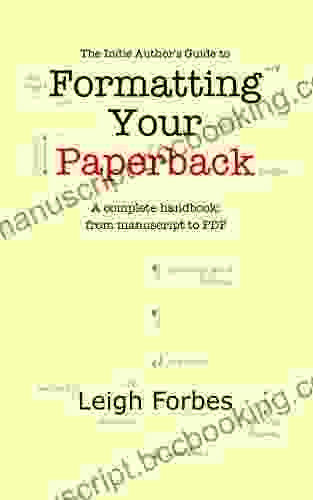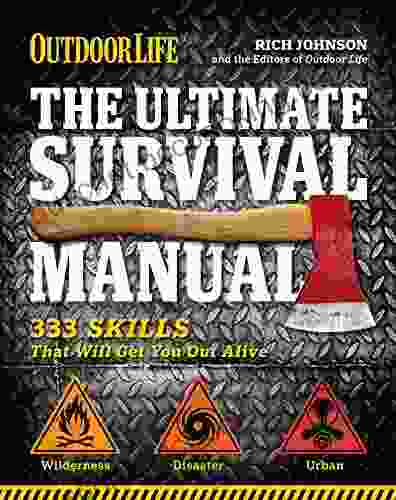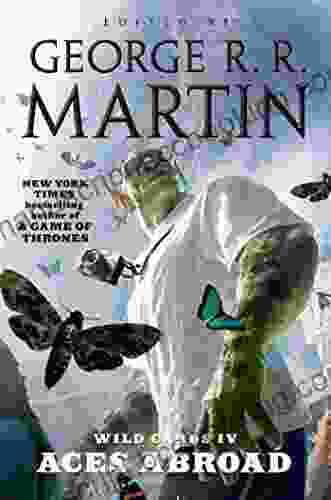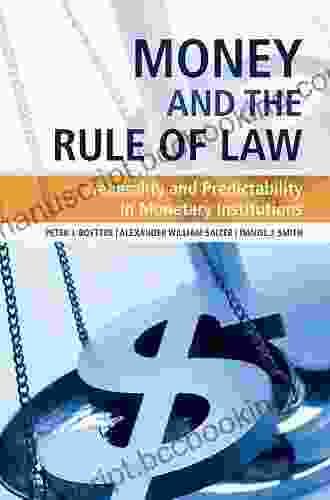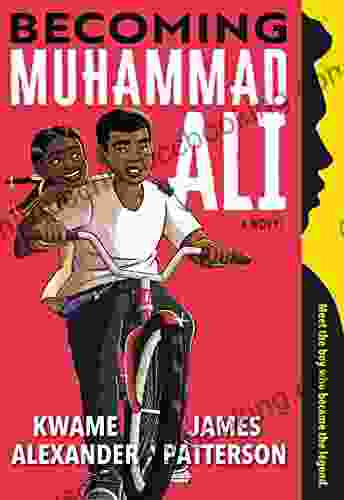The Indie Author Guide To Formatting Your Paperback

5 out of 5
| Language | : | English |
| File size | : | 915 KB |
| Text-to-Speech | : | Enabled |
| Screen Reader | : | Supported |
| Enhanced typesetting | : | Enabled |
| Print length | : | 90 pages |
| Lending | : | Enabled |
Congratulations on taking the first step towards self-publishing your paperback book! Formatting your book correctly is essential for creating a professional-looking product that readers will enjoy. This guide will walk you through everything you need to know about formatting your paperback, from choosing the right trim size to creating a beautiful cover.
Chapter 1: Choosing the Right Trim Size
The trim size of your book is the finished size of the book, including the cover. The most common trim sizes for paperback books are 6x9 inches, 5x8 inches, and 5.5x8.5 inches. When choosing a trim size, you need to consider the content of your book, the type of binding you want to use, and the target market for your book.
For example, a book with a lot of images or graphics will look better in a larger trim size, such as 6x9 inches. A book with a lot of text will be more readable in a smaller trim size, such as 5x8 inches. If you are unsure which trim size to choose, you can always ask your printer for advice.
Chapter 2: Creating a Beautiful Cover
The cover of your book is the first thing potential readers will see, so it's important to make a good impression. Your cover should be eye-catching, relevant to the content of your book, and professional-looking.
There are many different ways to create a book cover. You can hire a professional designer, use a pre-made template, or create your own cover using a program like Photoshop or Canva. If you are creating your own cover, be sure to follow the guidelines provided by your printer.
Chapter 3: Formatting the Interior of Your Book
The interior of your book includes the text, images, and other elements that make up the content of your book. When formatting the interior of your book, you need to consider the following:
- Font: The font you choose should be easy to read and appropriate for the genre of your book.
- Font size: The font size should be large enough to be readable, but not so large that it makes the book difficult to hold.
- Line spacing: The line spacing should be comfortable to read, but not so large that it makes the book look cluttered.
- Margins: The margins should be wide enough to frame the text and make the book look professional.
- Chapters: Each chapter should start on a new page.
- Sections: If your book has multiple sections, you should use section breaks to divide them.
- Images: Images should be placed throughout the book to break up the text and make the book more visually appealing.
- Tables: Tables can be used to present data or information in a clear and concise way.
- Footnotes: Footnotes can be used to provide additional information or references without interrupting the flow of the text.
- Endnotes: Endnotes are similar to footnotes, but they are placed at the end of the book.
- Bibliography: If your book includes references to other works, you should include a bibliography at the end of the book.
- Index: If your book is long or complex, you may want to include an index to help readers find specific information.
Chapter 4: Printing and Binding Your Book
Once you have finished formatting your book, you need to choose a printer and binding option. There are many different printers and binding options available, so it's important to do your research and compare prices and quality before making a decision.
The most common binding options for paperback books are perfect binding, saddle stitching, and coil binding. Perfect binding is the most durable and professional-looking binding option, but it is also the most expensive. Saddle stitching is a less expensive binding option, but it is not as durable as perfect binding. Coil binding is a good option for books that need to be able to lay flat, such as cookbooks or textbooks.
Formatting your paperback book correctly is essential for creating a professional-looking product that readers will enjoy. By following the tips in this guide, you can format your book like a pro and take the next step towards self-publishing success.
5 out of 5
| Language | : | English |
| File size | : | 915 KB |
| Text-to-Speech | : | Enabled |
| Screen Reader | : | Supported |
| Enhanced typesetting | : | Enabled |
| Print length | : | 90 pages |
| Lending | : | Enabled |
Do you want to contribute by writing guest posts on this blog?
Please contact us and send us a resume of previous articles that you have written.
 Book
Book Novel
Novel Page
Page Chapter
Chapter Text
Text Story
Story Genre
Genre Reader
Reader Library
Library Paperback
Paperback E-book
E-book Magazine
Magazine Newspaper
Newspaper Paragraph
Paragraph Sentence
Sentence Bookmark
Bookmark Shelf
Shelf Glossary
Glossary Bibliography
Bibliography Foreword
Foreword Preface
Preface Synopsis
Synopsis Annotation
Annotation Footnote
Footnote Manuscript
Manuscript Scroll
Scroll Codex
Codex Tome
Tome Bestseller
Bestseller Classics
Classics Library card
Library card Narrative
Narrative Biography
Biography Autobiography
Autobiography Memoir
Memoir Reference
Reference Encyclopedia
Encyclopedia Ghassan Moussawi
Ghassan Moussawi Evan Ryan
Evan Ryan Ethelyn Geschwind
Ethelyn Geschwind Graham Mcneill
Graham Mcneill Misty Jordyn
Misty Jordyn Euna Lee
Euna Lee Fj Griffitts
Fj Griffitts Mona Prince
Mona Prince Jimmy Snuka
Jimmy Snuka F Remy Diederich
F Remy Diederich John Michael Greer
John Michael Greer Fletcher Dunn
Fletcher Dunn Mark Pendergrast
Mark Pendergrast Esther Jungreis
Esther Jungreis Evelio Grillo
Evelio Grillo Michael W Waters
Michael W Waters Explorer Publishing
Explorer Publishing Felicity Sedgewick
Felicity Sedgewick Linda Dobson
Linda Dobson Matt Morris
Matt Morris
Light bulbAdvertise smarter! Our strategic ad space ensures maximum exposure. Reserve your spot today!
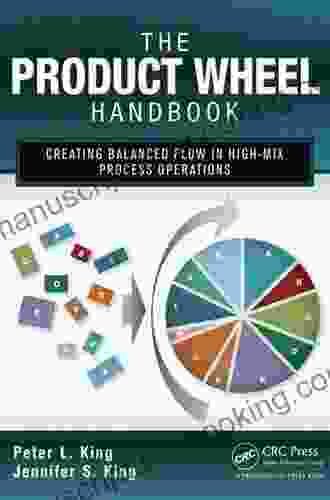
 Darnell MitchellCreating Balanced Flow in High Mix Process Operations: The Definitive Guide...
Darnell MitchellCreating Balanced Flow in High Mix Process Operations: The Definitive Guide... Hugh ReedFollow ·19.8k
Hugh ReedFollow ·19.8k Daniel KnightFollow ·13.4k
Daniel KnightFollow ·13.4k Ira CoxFollow ·12.2k
Ira CoxFollow ·12.2k Neal WardFollow ·15.1k
Neal WardFollow ·15.1k Andrew BellFollow ·8.9k
Andrew BellFollow ·8.9k Kurt VonnegutFollow ·11.1k
Kurt VonnegutFollow ·11.1k Vladimir NabokovFollow ·19.6k
Vladimir NabokovFollow ·19.6k Jay SimmonsFollow ·16.2k
Jay SimmonsFollow ·16.2k
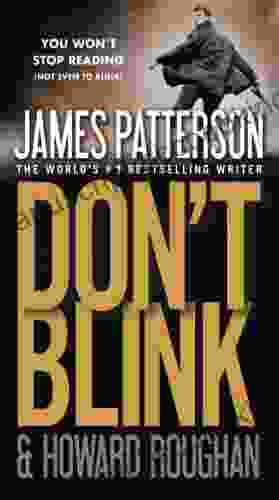
 W.H. Auden
W.H. AudenStep into a World of Thrilling Deception: Don Blink by...
Unveiling the Masterpiece of Suspense:...
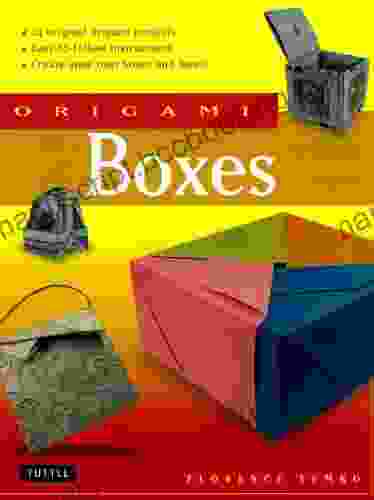
 Jaylen Mitchell
Jaylen MitchellUnleash Your Creativity with "This Easy Origami": A...
: Embark on an Enchanting Voyage into the...
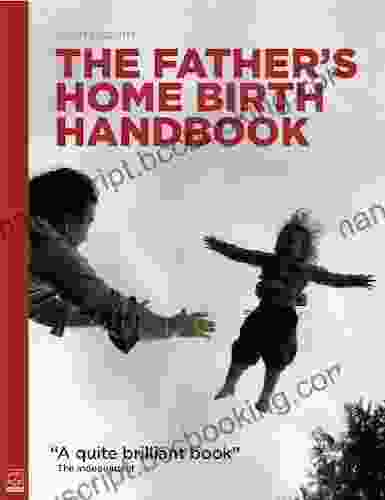
 Vladimir Nabokov
Vladimir NabokovEmpowering Home Births: A Comprehensive Guide for Fathers...
An In-Depth Exploration of Paternal...

 Juan Rulfo
Juan RulfoThe Maya Exodus: Indigenous Struggle for Citizenship in...
The Maya Exodus: Indigenous Struggle for...
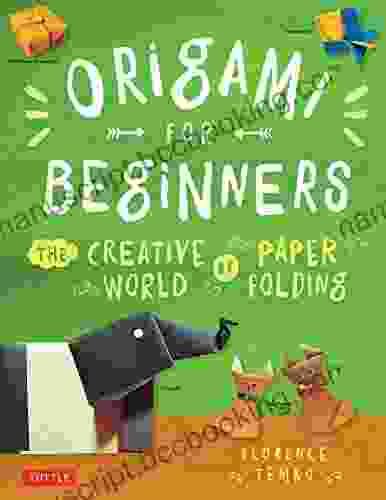
 Julio Ramón Ribeyro
Julio Ramón RibeyroKana Made Easy: Dive into Japanese the Fun and Effortless...
Unveiling the Secrets...
5 out of 5
| Language | : | English |
| File size | : | 915 KB |
| Text-to-Speech | : | Enabled |
| Screen Reader | : | Supported |
| Enhanced typesetting | : | Enabled |
| Print length | : | 90 pages |
| Lending | : | Enabled |


